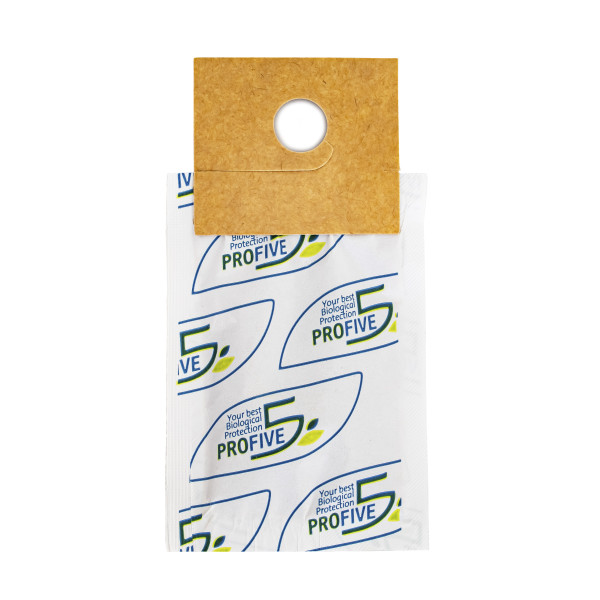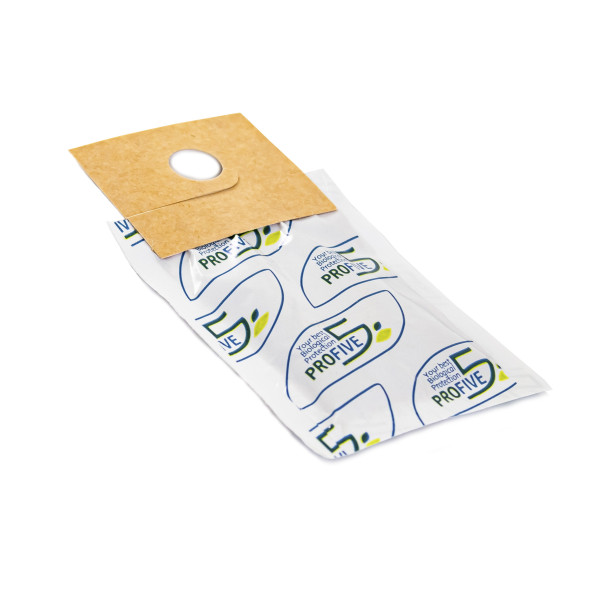What is CALIF PRO5?
Neoseiulus californicus is a predatory mite from the family Phytoseiidae that feeds on spider mites and some other phytophagous mites. This tiny entomophage measures less than 1 mm in length (with females being larger than males) and has a spherical body with a beige color. It is adapted to a wide range of temperatures and can survive in conditions of reduced air humidity. In the absence of prey, it can sustain its population by feeding on pollen, making it an optimal choice for protecting heavily flowering crops. Additionally, Neoseiulus californicus does not cause damage to plants and has no negative impact on the environment, making it safer compared to traditional synthetic pesticides. This predator is widely used as an entomophage and enjoys a good reputation in the market of biological plant protection.
Life cycle.
The life cycle of Neoseiulus californicus consists of several developmental stages, including eggs, larval stage, two nymphal stages, and the adult stage. The eggs are oval-shaped and have a diameter of about 0.2 mm. They are usually located on the lower side of leaves near spider mite colonies. During their development, all mobile stages of the predator feed on pests such as various phytophagous mites and some other small invertebrates. Depending on external environmental conditions, the duration from egg hatching to adulthood can vary from 4-5 to 21 days. In warm and dry conditions, they reproduce faster than in cooler conditions.
Pests.
Neoseiulus californicus preys on spider mites and some other phytophagous mites. It is recommended for controlling two-spotted spider mite (Tetranychus urticae), red spider mite (Tetranychus cinnabarinus), fruit tree red spider mite (Panonychus ulmi), and citrus red mite (Panonychus citri). High control efficacy is also observed against broad mite (Polyphagotarsonemus latus), strawberry mite (Phytonemus pallidus), Oligonychus perseae, and others. The high effectiveness of Neoseiulus californicus in controlling target pests has been confirmed by long-term experience in protected cultivation.
Crops.
Neoseiulus californicus is used in a wide range of crops, including:
• Vegetable crops: cucumber, sweet and hot peppers, eggplant, zucchini, green and red beans, etc.
• Fruit crops: strawberry, blackberry, blueberry, etc.
• Ornamental plants: rose, chrysanthemum, gerbera, anthurium, etc.
It is not recommended to use Neoseiulus californicus on tomatoes. This is due to anatomical features of the mite that make it difficult for it to move on densely hairy leaves, such as those of tomato plants. In such cases, other methods of biological control, such as parasitoid wasps and other predatory mites adapted to hunting on hairy leaves (e.g., Phytoseiulus persimilis), are recommended.
Benefits.
As the sachets contain larvae, nymphs, and eggs of the predator, the emergence of the predator from the sachet will occur within 4 weeks, ensuring prolonged protection of the crop.
Application.
It is recommended to introduce the mites at an early stage of plant growth to allow them to effectively control pests throughout the season. Sachets are evenly distributed throughout the crop. To obtain precise application rates for your crop, please contact our managers.
Storage.
Storage of Neoseiulus californicus should follow specific guidelines to ensure maximum effectiveness of biological control. Here are a few recommendations:
• The maximum storage period for the product from the time of receipt is 1-2 days.
• Store the product in a horizontal position in a cool place protected from direct sunlight, at a temperature of 12-14°C. It is important to remember to avoid contact with pesticides during the storage of the mites.
• Storing the entomophages in a refrigerator or freezer is prohibited as it may lead to their death.
There are no reviews for this product, be the first to leave your review.


